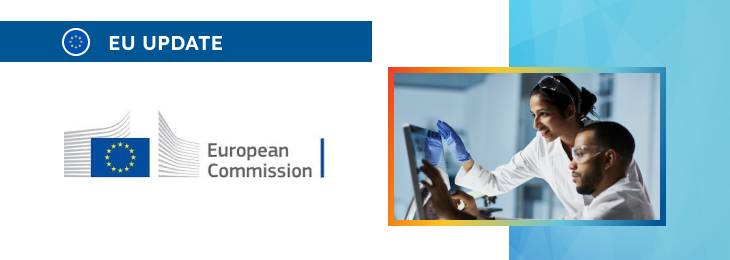The new article provides additional clarifications regarding study design and data management aspects.

Table of content
The Medical Device Coordination Group (MDGC), an advisory body composed of the representatives of the EU Member States focused on the general improvement of the regulatory framework in the sphere of medical devices, has published a guidance document dedicated to the content of the clinical investigation plan for clinical investigations of medical devices.
The document provides an overview of the applicable regulatory requirements and additional clarifications and recommendations to be considered by medical device manufacturers, study sponsors, and other parties involved in operations with medical devices, including clinical investigations, to ensure compliance with it.
At the same time, MDCG reserves the right to make changes to the guidance and recommendations provided therein, should such changes be reasonably necessary to reflect corresponding amendments to the underlying legislation or accommodate the recent technology developments and arising needs.
In particular, the document describes in detail the content of a Clinical Investigation Plan (CIP) to be prepared by the responsible parties, highlighting the key aspects to be considered.
Design of the Clinical Investigation
The scope of the guidance covers, among other things, the critical aspects related to the design of the clinical investigation to be considered by the responsible party when creating a clinical investigation plan.

General Overview
The introductory section outlines the necessity for a detailed and scientifically robust design in clinical investigations. It emphasizes the importance of selecting a specific type of investigation, such as exploratory or confirmatory, and articulates its reasoning.
The document pays special attention to the selection and measurement of primary and secondary endpoints, which receive special attention, with a focus on safety, performance, and clinical benefits.
The document also emphasizes the importance of considering additional safety measures, especially for early studies involving new or high-risk devices, through strategies like close monitoring and phased enrollment.
Investigational Device and Comparator
The document also explains the approach to be followed with respect to the selection or absence of comparators and the specifics of implantable devices, emphasizing the importance of providing an implant card to subjects that is in line with regulatory requirements.
Subject Information and Selection Criteria
The guidance further describes the relevant criteria for subject selection, including the total number and distribution across study arms.
It highlights including vulnerable groups, detailing selection criteria, and recruitment procedures, and ensuring the investigation population represents the target demographic.
The setting and environment of the investigation, alongside patient involvement in the study phases, are vitally important, considering their significant impact on the study’s relevance and applicability.
Bias Minimization and Confounding Factors
The document specializes in measures to minimize bias through randomization, blinding, and managing confounding factors.
According to the document, ethical considerations, especially concerning sham procedures, must be examined for their necessity and impact.
The document also emphasizes the role of independent committees in maintaining objectivity and the importance of a monitoring board for ongoing safety evaluation.
Clinical Procedures and Diagnostic Methods
A party responsible for a clinical investigation plan is expected to provide detailed information about the clinical and diagnostic procedures to be conducted during the investigation, paying particular attention to any deviations from standard procedures, if relevant.
It also includes the logistics of device and comparator usage, specifying the handling of biological samples and outlining the follow-up protocols to assess clinical performance and safety adequately.
Monitoring Plan
The document further highlights the necessity for thorough monitoring to protect subject rights and ensure data integrity.
In particular, the plan should include details on the independent monitoring role and data verification processes tailored to the study’s unique characteristics.
Statistical Design and Analysis
The relevant section describes the statistical framework of the clinical investigation, covering analysis populations, baseline data, and analytical procedures. It details the approach to statistical significance, sample size calculation, and justifications based on expected outcomes and effect sizes. The document elaborates on strategies to manage bias, potential confounding factors, and data handling across multicentre studies. This includes subgroup analysis, missing data management, and exploratory analyses.
Data Management
Another essential aspect addressed in the guidance relates to data management. In particular, the guidance emphasizes the importance of protocols for ensuring data reliability and security throughout the investigation.
It also outlines data collection, processing, and storage procedures, ensuring accuracy, confidentiality, and protection against unauthorized access.
The document also discusses strategies for responding to data security breaches and complies with data retention requirements, highlighting the adherence to legal standards for personal data protection.
Conclusion
The present MDCG guidance provides a comprehensive overview of the information to be included in the CIP section dedicated to design-related matters. The document also highlights the critical points associated with the data management and record-keeping practices to be considered by the parties responsible for a clinical investigation.
How Can RegDesk Help?
RegDesk is a holistic Regulatory Information Management System that provides medical device and pharma companies with regulatory intelligence for over 120 markets worldwide. It can help you prepare and publish global applications, manage standards, run change assessments, and obtain real-time alerts on regulatory changes through a centralized platform. Our clients also have access to our network of over 4000 compliance experts worldwide to obtain verification on critical questions. Global expansion has never been this simple.

